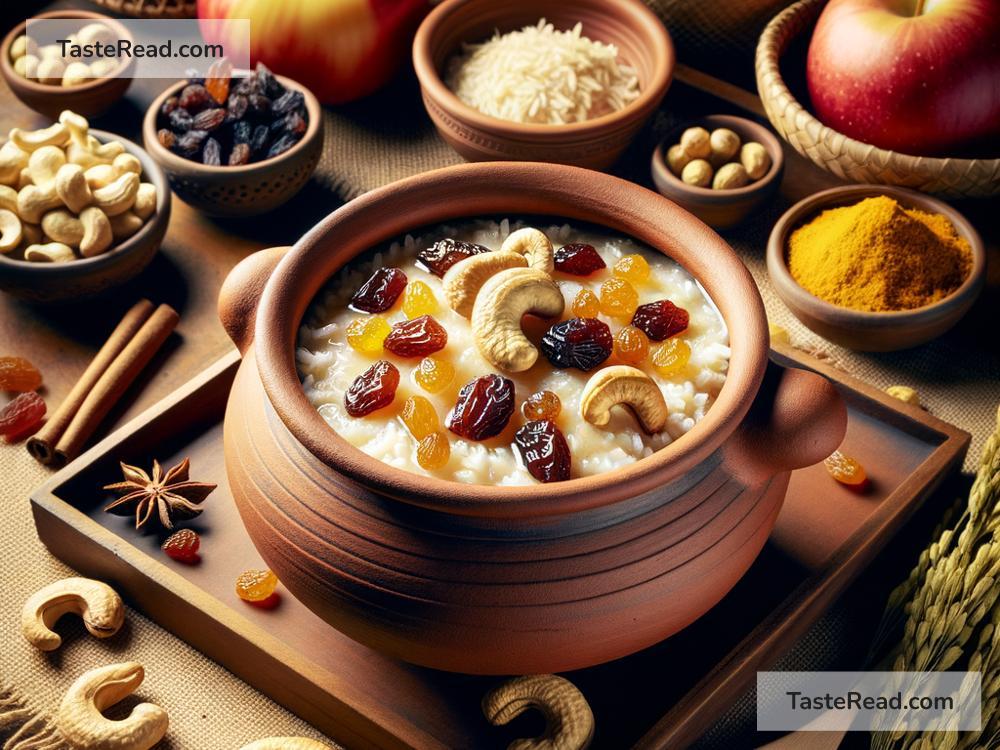Discovering Timeless Rice Pudding Traditions in Sri Lanka
Sri Lanka, known as the “Pearl of the Indian Ocean,” is a land rich in culture, history, and delicious food. Among its many culinary treasures, one dish stands out for being loved by generations: rice pudding. Known locally as “Kiribath,” which means “milk rice,” this creamy, comforting dish is more than just food—it’s a tradition steeped in history, culture, and celebrations.
Let’s journey through Sri Lanka’s timeless rice pudding traditions, understand why it’s so special, and perhaps find some inspiration to try making it yourself.
What is Sri Lankan Rice Pudding?
Sri Lankan rice pudding, or Kiribath, is a dish made with rice, coconut milk, and a pinch of salt. The process is simple, but the result is truly magical. The rice is cooked until tender, and then coconut milk is added to create a creamy texture. The dish is soft, fragrant, and comforting, carrying the tropical essence of Sri Lanka in every bite.
Kiribath is unique because it is made using thick coconut milk, which gives it its signature richness. Unlike Western-style rice puddings, which are often sweet and served as desserts, Kiribath is usually served plain or with savory accompaniments. Sometimes it’s enjoyed with “lunumiris,” a spicy chili paste made with crushed red chilies, onions, lime, and salt.
A Dish for Special Occasions
In Sri Lanka, Kiribath is not just everyday food—it’s a dish for special moments. It holds deep cultural significance and is closely tied to celebrations and family traditions. Kiribath is often cooked at home on important days, such as New Year’s Day (celebrated in April as part of Sinhala and Tamil New Year), weddings, and birthdays.
Sri Lankans believe that starting a new chapter in life calls for Kiribath. During New Year celebrations, the first meal of the day usually includes Kiribath as a symbol of prosperity and good fortune. It’s also served during Buddhist ceremonies and other religious gatherings, where its simplicity and purity reflect spiritual values.
At weddings, Kiribath takes on an exciting role as it is often part of the bride and groom’s first shared meal. Symbolizing unity and the start of a new life together, it becomes far more than just food—it’s a tradition that strengthens family bonds.
How Kiribath is Made
The beauty of Kiribath lies in its simplicity. The basic recipe requires just three ingredients: rice, coconut milk, and salt. Here’s how it’s traditionally made:
-
Cooking the Rice: Start by washing raw white rice, usually a type of short-grain red or white rice used in Sri Lanka. Then cook it in water until it turns soft and absorbs almost all the liquid.
-
Adding Coconut Milk: Once the rice is cooked, thick coconut milk (freshly grated coconut is typically used to make the milk) is added to the pot. Salt is also added to enhance the flavor. The rice is mixed until it becomes creamy and smooth.
-
Pressing the Rice: Once the rice pudding is ready, it’s spread out onto a flat tray or dish and pressed down to form a thick, even layer. Traditionally, it’s cut into diamond or square-shaped slices for serving.
The smooth texture of Kiribath makes it easy to eat, whether paired with spicy condiments like lunumiris or enjoyed plain. The combination of creamy coconut milk and soft rice feels soothing, creating a dish that’s perfect for both the body and soul.
Modern Twists to a Classic Recipe
While traditional Kiribath remains adored, creative cooks in Sri Lanka have found ways to give this classic dish new life. Sweet versions of Kiribath are becoming more popular, often flavored with jaggery (palm sugar), cardamom, or cinnamon. Toppings like cashews, raisins, and sago pearls give it a festive, dessert-like feel.
Some adventurous chefs have even experimented with adding chocolate or fresh tropical fruits, such as mangoes and bananas, for a modern twist. These variations are not traditional but show how beloved this dish is as it blends into contemporary food culture.
Why Rice Pudding Matters in Sri Lankan Culture
Rice pudding in Sri Lanka is more than a tasty tradition. It symbolizes unity, family, and the importance of sharing meals together. Preparing Kiribath often becomes a family affair, with elders teaching younger generations how to cook and shape the perfect dish.
In rural communities, Kiribath is sometimes made as an offering during ceremonies at Buddhist temples and shrines. This act reflects gratitude and respect for blessings received, tying food to spiritual practice.
Beyond its cultural importance, the dish is also deeply rooted in Sri Lanka’s agricultural heritage. The island has long been a rice-growing nation, and rice is considered a sacred crop. Coconut, another central ingredient in Kiribath, is widely used in Sri Lankan cooking due to its availability and versatility. Together, rice and coconut represent the island’s connection to nature and its reliance on local resources for sustenance.
Experience the Magic of Kiribath
If you ever visit Sri Lanka, don’t miss the opportunity to try Kiribath. It’s served in homes, traditional restaurants, and even during festive celebrations across the country. Whether you taste the authentic version with spicy lunumiris or a modern sweet variation, it’s sure to leave a lasting impression.
For those who enjoy cooking, why not try making Kiribath at home? With simple ingredients and an easy recipe, you can bring this timeless Sri Lankan tradition into your kitchen. Making Kiribath can be a great way to connect with the culture and spirit of this vibrant island nation.
Sri Lanka’s rice pudding traditions remind us that food is much more than nourishment—it’s a way to celebrate life, connect with loved ones, and honor history. Through a simple yet meaningful dish like Kiribath, the island preserves its rich cultural heritage while embracing new ways to enjoy it.


